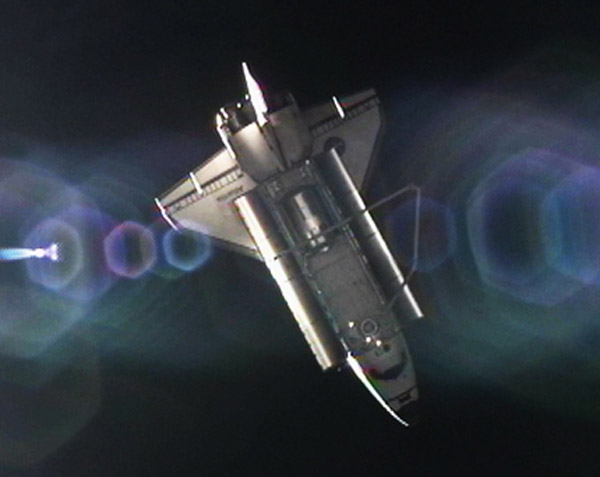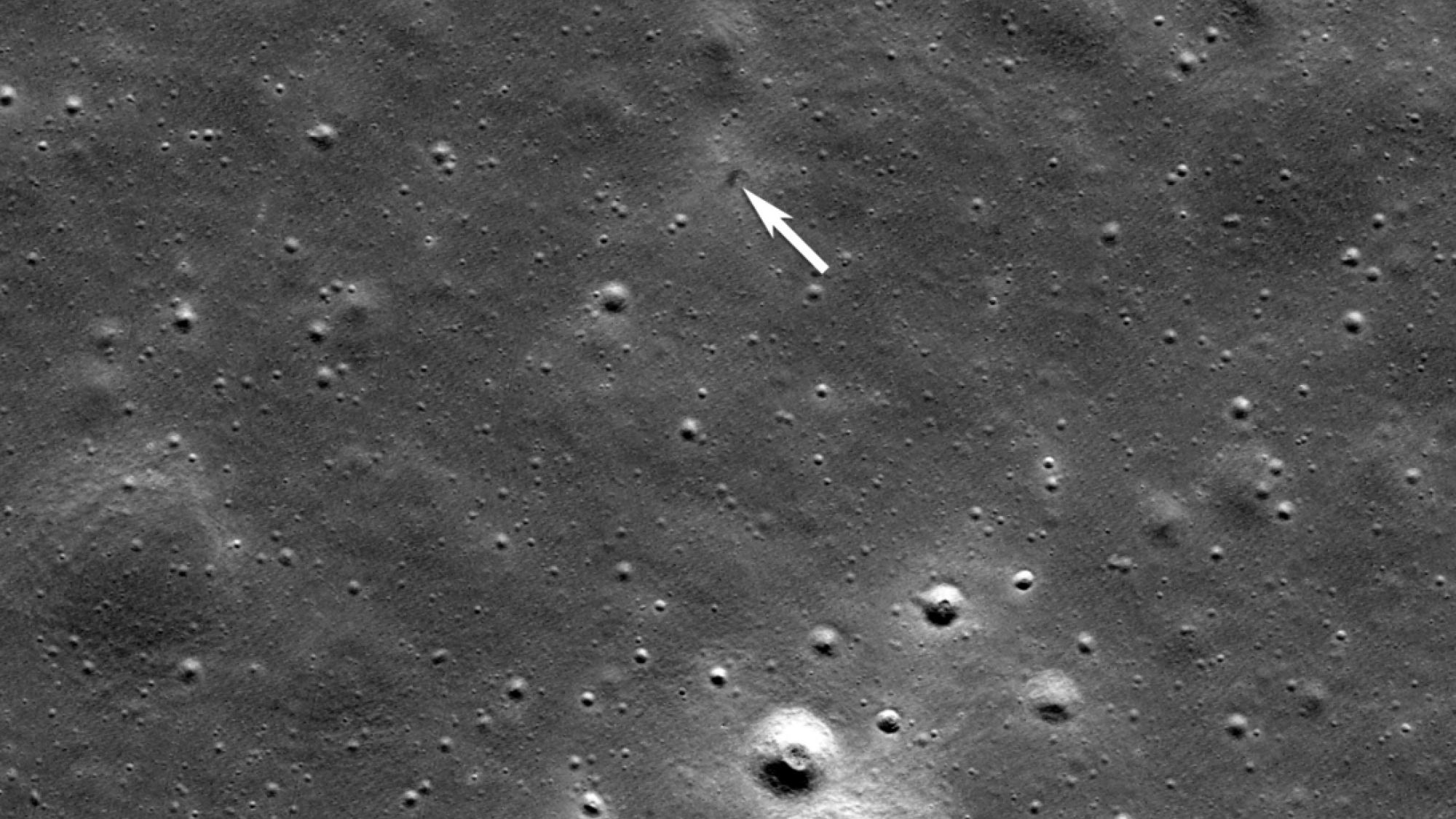
NASA's Space Shuttle By the Numbers: 30 Years of a Spaceflight Icon

NASA's space shuttles have racked up an amazing set of accomplishments over the last 30 years, not to mention the miles and statistics. But after three decades and 135 flights, the era of the NASA space shuttle is at an end.
The final shuttle flight, NASA's STS-135 mission aboard Atlantis, will land Thursday (July 21) to cap a 13-day trip that delivered supplies and spare parts to the International Space Station. [Photos: Shuttle Bids Farewell to Space Station]
With NASA's reusable space plane fleet retiring, here is a by-the-numbers look at the iconic 30-year spaceflight icon:
$209 Billion: The estimated total cost of NASA's 30-year space shuttle program from development through its retirement.
3,513,638: The weight in pounds of cargo that NASA's space shuttles have launched into orbit. That's more than half the payload weight of every single space launch in history since 1957 combined.
229,132: The amount of cargo (in pounds) that NASA's shuttles have returned to Earth from space through 2010.
198,728.5: The number of man-hours NASA shuttles spent in space during their 30-year history. That's about 8,280 days of manned spaceflight, NASA officials said.
Breaking space news, the latest updates on rocket launches, skywatching events and more!
20,830: The number of orbits of Earth completed by NASA shuttles before the last 13-day mission of Atlantisduring the STS-135 flight. Atlantis will add another 200 orbits to that tally.
3,000: The scorching hot temperatures (in Fahrenheit) experienced by NASA shuttles in the hottest moments of atmospheric re-entry during landing.
1,323: Number of days in space spent during NASA shuttle flights between April 1981 and July 2011. That includes the 13 days of the final shuttle flight, as well as the other 31,440 hours, 59 minutes and 33 seconds of all 134 other missions.
833: The total number of crewmembers of all 135 space shuttle missions, with some individuals riding multiple times and 14 astronauts killed during the Challenger and Columbia accidents.
789: The number of astronauts and cosmonauts who have returned to Earth on a NASA shuttle. Some spaceflyers actually launched into orbit on Russian Soyuz vehicles and returned home on a shuttle.
355: The actual number of individual astronauts and cosmonauts who have flown on the space shuttle. That breaks down to 306 men and 49 women hailing from 16 different countries.
234: The total number of days space shuttle astronauts spent at the International Space Station between 1998 and 2011, the construction phase of the orbiting laboratory.
180: The total number of satellites and other payloads, including components for the International Space Station, deployed by NASA space shuttles.
135: Total number of NASA space shuttle missions that will have flown between 1981 and 2011. NASA added the prefix of "STS" (Space Transportation System) to each shuttle mission. Of the 135 missions, 133 flights went as planned, with two ending in disaster. [Most Memorable Shuttle Missions]
52: The total number of satellites, space station components and other payloads returned from orbit on NASA shuttle missions.
37: The number of times a NASA shuttle has docked at the International Space Station during the outpost's lifetime.
14: The numberastronauts killed during the space shuttle Challenger accident of 1986 and Columbia accident in 2003. They are: (Challenger's STS-51-L Crew) Commander Francis "Dick" Scobee, pilot Mike Smith, mission specialists Judy Resnik, Ellison Onizuka and Ron McNair, and payload specialists Greg Jarvis and Christa McAuliffe; (Columbia's STS-107 Crew) Commander Rick Husband; pilot William McCool; mission specialists Michael Anderson, David Brown, Kalpana Chawla and Laurel Clark, and payload specialist Ilan Ramon, Israel's first astronaut.
9: The number of times a NASA shuttle docked at Russia's space station Mir between 1994 and 1998.
8: The largest number of astronauts to fly on a NASA shuttle at one time. It happened at least twice: during the STS-61A shuttle mission in 1985, then again in 1995 during the STS-71 flight's return from the Russian Space Station Mir.
7: The total number of missions by shuttle astronauts to retrieve, repair and then redeploy a satellite in orbit.
5: NASA's final tally for the number of spaceworthy vehicles built for the space shuttle fleet. The shuttles that have launched into space are: Columbia, Challenger, Discovery, Atlantis and Endeavour. Challenger and Columbia were lost during spaceflight tragedies.
Another shuttle prototype, the Enterprise vehicle, only flew in Earth's atmosphere and never launched into orbit.
3: The number of main landing sites for NASA space shuttles at the end of their missions. They are: the Kennedy Space Center in Cape Canaveral, Fla. (primary site), Edwards Air Force Base in California (backup), White Sands Space Harbor in White Sands, New Mexico (backup).
In addition to these three sites, NASA has a long list of airport runways that could be suitable for a shuttle landing in an emergency.
2: The final number of female space shuttle commanders after 30 years of shuttle flight. They are: U.S. Air Force Col. (retired) Eileen Collins and U.S. Air Force Col. (retired) Pamela Melroy.
1: The number of NASA's Original Seven Mercury astronauts to fly on a NASA shuttle. In October 1998, Mercury astronaut John Glenn launched on the space shuttle Discovery during the STS-95 mission. At age 77, Glenn (then a U.S. Senator) was the oldest person ever to fly in space. Glenn celebrated his 90th birthday this week during NASA's final shuttle flight.
NASA is retiring the space shuttle fleet to make way for a new exploration program aimed at sending astronauts on deep space missions to an asteroid and, eventually, Mars.
Once the program shuts down, all three space-flown shuttles and a prototype called Enterprise (which never flew in space) will be placed on public display in museums around the country.
You can follow SPACE.com Managing Editor Tariq Malik on Twitter @tariqjmalik. Follow SPACE.com for the latest in space science and exploration news on Twitter @Spacedotcom and on Facebook.
Join our Space Forums to keep talking space on the latest missions, night sky and more! And if you have a news tip, correction or comment, let us know at: community@space.com.

Tariq is the Editor-in-Chief of Space.com and joined the team in 2001, first as an intern and staff writer, and later as an editor. He covers human spaceflight, exploration and space science, as well as skywatching and entertainment. He became Space.com's Managing Editor in 2009 and Editor-in-Chief in 2019. Before joining Space.com, Tariq was a staff reporter for The Los Angeles Times covering education and city beats in La Habra, Fullerton and Huntington Beach. In October 2022, Tariq received the Harry Kolcum Award for excellence in space reporting from the National Space Club Florida Committee. He is also an Eagle Scout (yes, he has the Space Exploration merit badge) and went to Space Camp four times as a kid and a fifth time as an adult. He has journalism degrees from the University of Southern California and New York University. You can find Tariq at Space.com and as the co-host to the This Week In Space podcast with space historian Rod Pyle on the TWiT network. To see his latest project, you can follow Tariq on Twitter @tariqjmalik.
